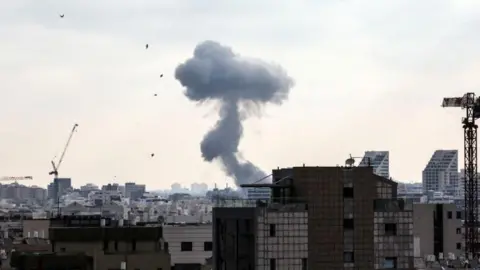**Retaliate Now, Later, or Never: Analyzing Iran’s Strategic Responses**
In the wake of the recent U.S. airstrikes targeting Iranian nuclear sites, the atmosphere remains tense. Iran has vehemently condemned these actions, pledging to execute what it describes as “everlasting consequences.” The challenge now lies in the decision-making calculus of Iran’s security and intelligence apparatus. This article explores the potential paths Iran may take, weighing the merits and risks of immediate retaliation, delayed responses, or outright restraint.
The first option that demands attention is immediate retaliation. Such a course of action would resonate deeply with hardliners within Iran’s leadership, especially following what they perceive as humiliation by both the United States and Israel, the latter often labeled as “the Great Satan.” The escalation of conflicts with Israel has persisted for ten days, leading to mounting pressures internally for a demonstration of strength against U.S. interests. Iran reportedly retains around half of its initial stock of 3,000 missiles, which places them in a strategic position to respond.
Inevitably, targeting one of the numerous U.S. bases in the Middle East becomes a consideration, with Iran having identified around 20 possible locations. Among these is the U.S. Navy’s Fifth Fleet base situated at Mina Salman in Bahrain. However, the Iranian leadership may hesitate to strike at a regional ally, prompting a consideration of proxy forces in Iraq or Syria as alternatives. The lessons learned from the U.S. assassination of Qassem Soleimani in 2020 echo in this context; Iran previously refrained from inflicting casualties on U.S. personnel by issuing warnings. Nevertheless, this time Iran’s approach might be less restrained, signaling the urgency for retaliation against American targets.
Another possible military strategy for Iran includes executing ‘swarm attacks’ targeting U.S. naval assets using an array of drones and fast torpedo boats, tactics that the Iranian Revolutionary Guards Corps has refined over the years. The hope would be to overwhelm U.S. naval defenses through sheer volume, striking at vulnerable naval ships. Furthermore, Iran could call upon its allies, such as the Houthis in Yemen, to intensify assaults on commercial shipping routes. The looming threat to the Strait of Hormuz, through which a significant percentage of the world’s oil flows, poses another potent option. Here, Iran could execute a maritime blockade by laying mines, substantially affecting global oil supplies and pricing.
Transitioning to a more calculated or later retaliation approach, Iran might opt to wait for a more favorable moment following a de-escalation of tensions. This strategy would allow for a surprise attack when U.S. forces are less vigilant, thus decreasing the likelihood of immediate retaliation by the United States. Such an attack might involve targeting U.S. diplomatic missions, increasing the risks for Iranian operatives. However, this avenue is fraught with potential consequences and could prompt a renewed cycle of violence, particularly during a period when Iranian citizens are yearning for a semblance of order and peace.
Finally, the third option involves exercising restraint. This course may present itself as an avenue to mitigate potential American reprisals and avoid further destabilization. From a diplomatic standpoint, Iran might consider re-engagement with the U.S. and other international stakeholders. Still, such a dialogue would necessitate an adjustment to the demands from both Washington and Jerusalem—specifically, the necessity for Iran to forgo uranium enrichment in exchange for peace and negotiation. This path could render the regime vulnerable to accusations of weakness, especially in light of its recent aggressive rhetoric.
While each route carries perilous implications, the interplay of domestic pressures, external threats, and a shifting geopolitical landscape will undoubtedly shape Iran’s forthcoming strategies. The Iranian decision-makers are thus tasked with navigating these complex dynamics amid heightened security concerns, making it essential for them to carefully assess their next steps in a world already rife with uncertainty.



